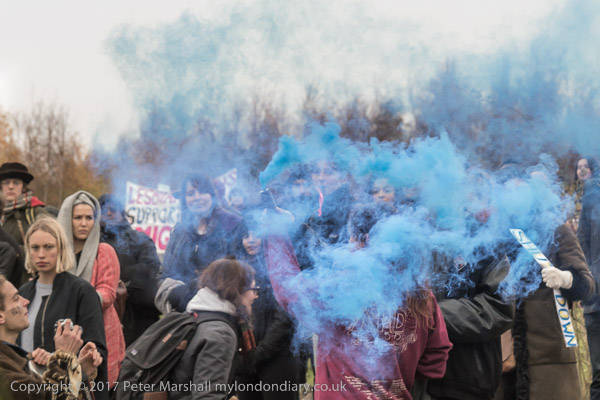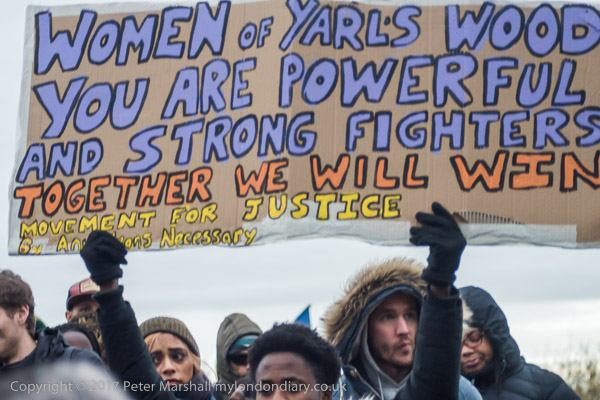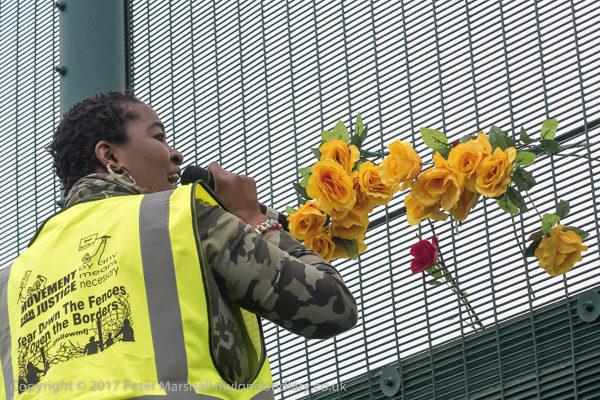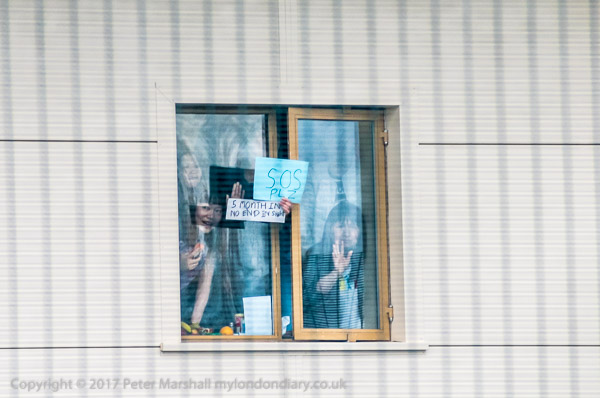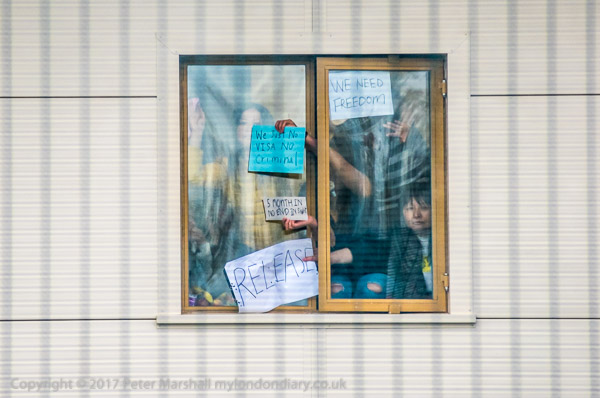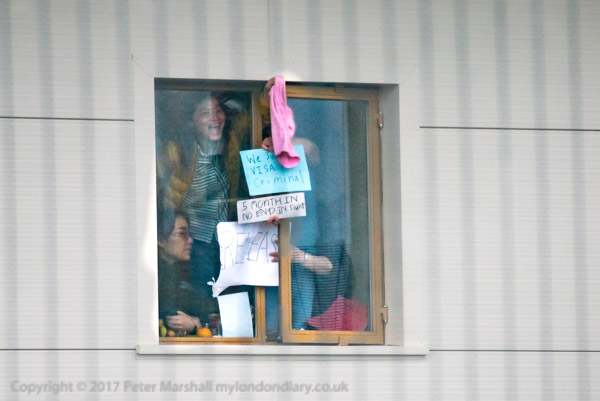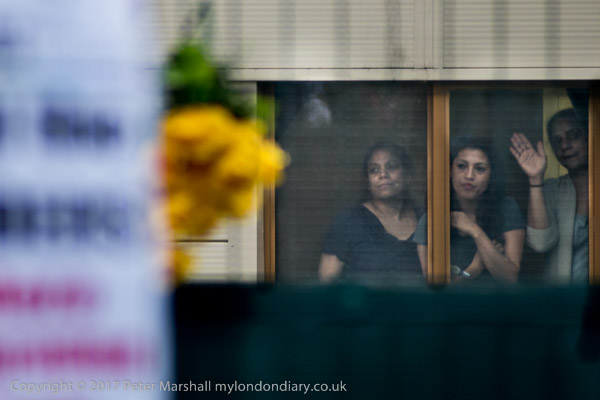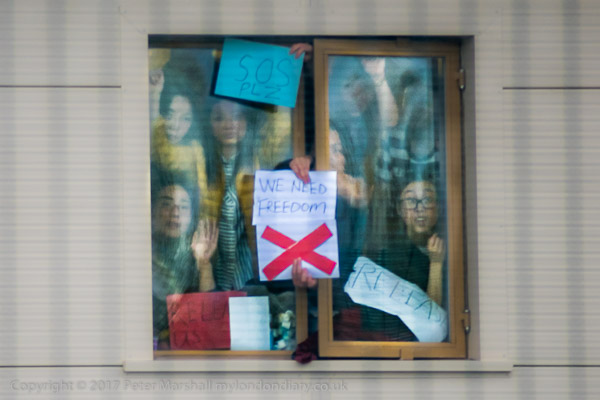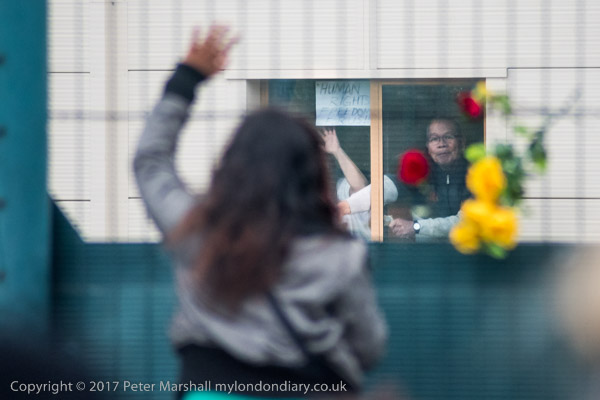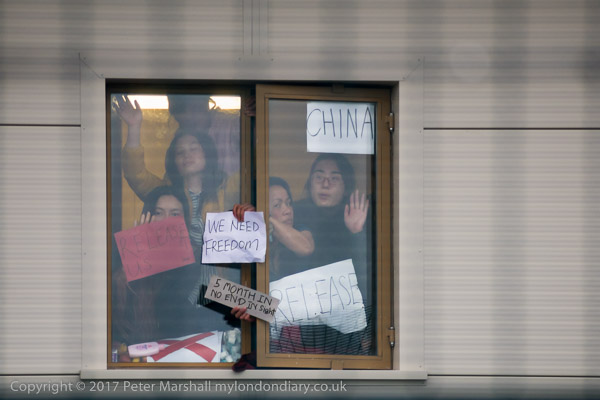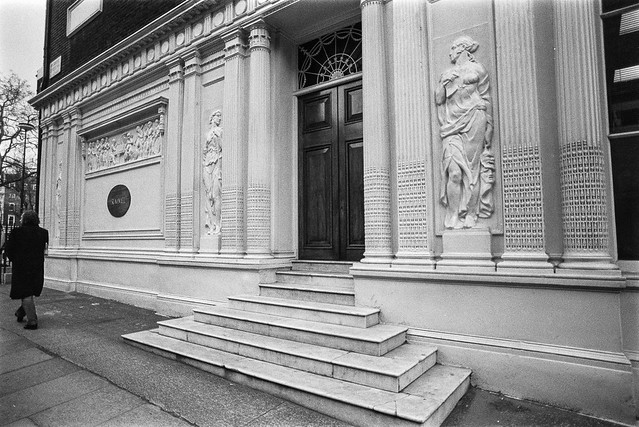My walk on Friday 4th August 1989 began at a bus stop on Battersea Bridge Road more or less opposite where I had caught a bus at the end of my previous walk
McCarthy Court is set just a few yards back from the road and I think this picture of it was possibly taken in Bridge Lane. Its two long blocks, one 4-storey and the other 2-storey were built for Wandsworth Council in 1978 with an inner garden between them and they contain 42 one bedroom flats and 36 two bedroom flats. The estate, now with a mix of council tenants, leaseholders and private tenants since 2005 has been managed by the McCarthy Court Co-operative whose board consists of estate residents with one council nominee. I assume McCarthy was the name of some local councillor or officer but perhaps someone in the area can tell me.
It had been planned, as the Survey of London recounted in 2013 as a part of a much larger development by the then Conservative government, but permission for much of this was denied by the Ministry of Housing and Wandsworth was told the houses over much of the site were sound and could be renovated. Writing about these pictures now I often wish that this survey had been available when I was photographing the area, as there were few published sources then.
The first Battersea Bridge was a toll bridge which replaced a ferry across the River Thames to Chelsea and was opened to pedestrians in 1771 and to horses and carts the following year. Designer Henry Holland had been forced to cut costs and the bridge was narrow and dangerous both to users and river traffic, but with some reinforcement it lasted until 1885, the last wooden bridge over the Thames. This bridge was painted by almost every significant British painter of the age including Turner and Whistler.
Presumably Bridge Lane used to lead to the bridge, though it now stops short, and may in earlier times have led the the ferry. These houses on Bridge Lane are presumably Victorian and may have been among those saved from demolition by the Minstry of Housing in 1968, though I think these are what is now number 1 and 2 on the north side of the road, despite the number 9 in my picture and 15 on one of the doors.
An interesting use of piles of bricks on top of both rectangular and cylindrical columns on the gate and steps to this house. I don’t think these have survived.
Back in the 1960s the Tate Gallery had paid Carl Andre a little over £2,000 for a pile of bricks, causing huge controversy over what many considered a waste of money. These seemed to me rather more interesting.
Bridge Lane ends at Surrey Lane and I turned west down it and then down Orbel Street. The estate here was built in the 1870s and 80s, and the northern side of Orbel Street is lined by semi-detached two storey houses with only vestigial front gardens.
You can stil see the short section of fencing between the two doorways of 70 and 72 on the street, unusually ornate for these houses, but the gate and the section fronting the pavement has gone. With the leaves from the shrub behind I felt I could almost be in the Palm House at Kew.
Not a medical establishment, The House Hospital at 64 Battersea High Street was for me symbol of the rapid and considerable gentrification of the area taking place as the industries were moving out. It offered replacement doors, at a price unspecified, fire places, baths, basins, taps etc. The site at 64-66 had built in 1975 for the factory of Allen and Ernest Lambert, who called themselves the Allen Brothers and made cigars. It later became a pipe factory for Imperial Tobacco until around 1930. According to the Survey of London “in the late 1950s they were occupied by the Ductube Company Ltd, makers of inflatable tubing for laying ducts in concrete.”
The building at right and the factory site behind has since been redeveloped as ‘Restoration Square‘. Number 64 and therather dull block at left, Powrie House, remain.
James Bennett was a linen draper, who named his business premises very visibly ‘London House’. Originally in a Georgian building on the right of this picture he added to this in a matching fashion across the middle and left of my picture in 1866. I think the ground-floor addition of Bennett’s Brasserie is rather later. The builidng is locally listed. I think ‘London’ was perhaps a suggestion that he sold fine fabrics, not the coarser ‘Manchester’ cloth, as Battersea was clearly back then not in London.
Gordon Ramsey took over the Brasserie in 2014 as a restaurant, but this closed in 2022.
Battersea Square had more or less disappeared off the maps by the 1970s, but the name was restored and considerable work carried out on the area after it was designated as a Conservation Area – the work was more or less complete when I made these pictures in 1989.
More from Battersea in a later post about this walk.
Flickr – Facebook – My London Diary – Hull Photos – Lea Valley – Paris
London’s Industrial Heritage – London Photos
All photographs on this page are copyright © Peter Marshall.
Contact me to buy prints or licence to reproduce.












